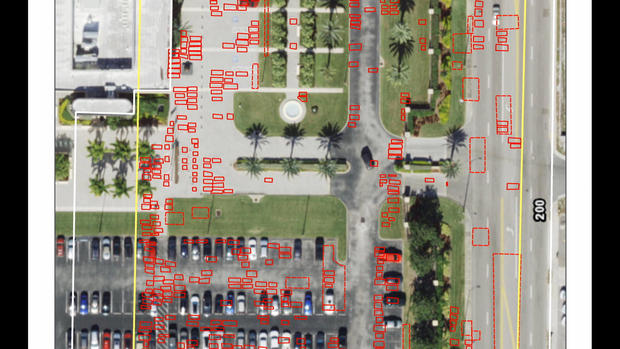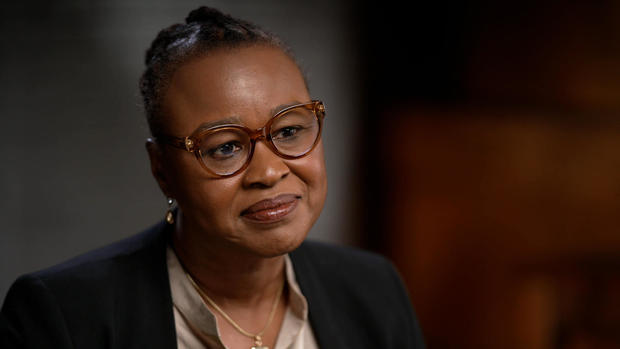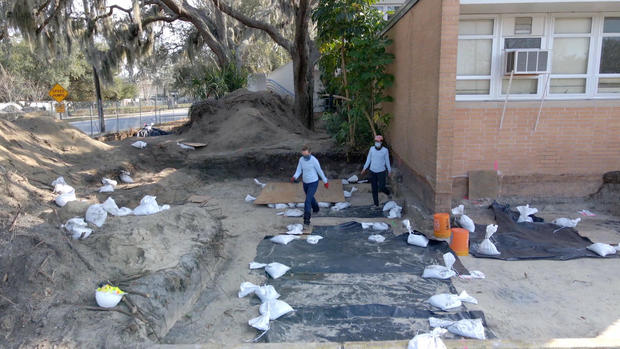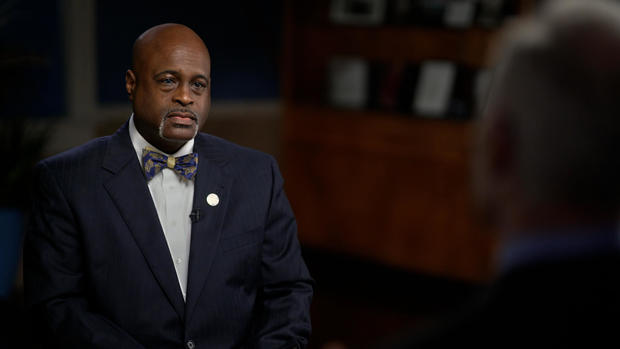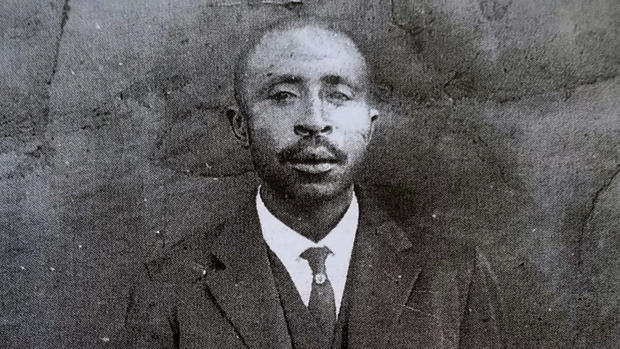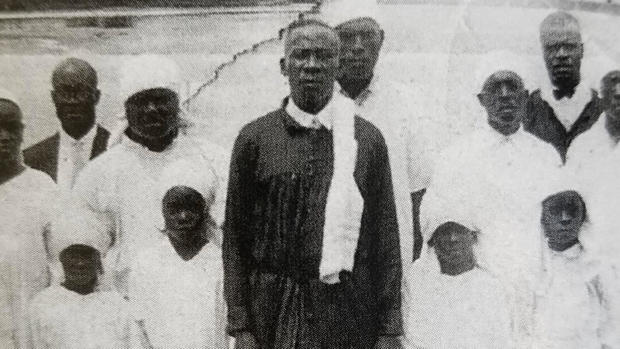Florida city faces its past with its Black cemeteries undiscovered
In the first half of the 20th century, Clearwater Heights, Florida, was a Black neighborhood — thriving, proud and anchored by faith. African Americans were not allowed to stay in the White hotel, swim on the bay, or walk on the beach because they lived in the segregated South. They were buried in separate graveyards after their deaths.
These cemeteries were considered sacred until they became more valuable. Clearwater, Texas made headlines in 1950 when it announced that it had agreed to move a “Negro’ cemetery. To make room for a swimming pool, hundreds of African American corpses were to be reburied. On the site of another Black cemetery, a department store was planned. The bodies would again be moved. O’Neal Larkin recalled his first discovery that something was horribly wrong many years later.
It’s not something I imagined. It’s what it was that I saw with my own eyes,” Larkin said to Scott Pelley, 60 Minutes correspondent.
Larkin, now aged 82, was watching a construction crew drill a trench through the site where a “relocated Black” cemetery.
Larkin stated, “But I recall the parking lot where engineers–traffic engineer– were cutting the lines through, and they cut through two coffins.” It was the first time I saw it, as I had walked past it and witnessed it for myself.
According to the Tampa Bay Times, many Florida’s segregated cemeteries were, in essence, paved by 2019. Clearwater, the modern city, decided to exhume this truth.
Erin McKendry and Rebecca O’Sullivan are archeologists working for Cardno. Cardno was hired to map the destruction by the city.
“These individuals were loved. McKendry shared with Pelley that the individuals were family members, fathers and mother. “And they were interred in love.”
O’Sullivan stated, “People deserve to treated with respect.” “This is the most important.”
McKendry and O’Sullivan set ground penetrating radar above a segregated cemetary where an office building stands today. They found 328 possible graves, most of them under the parking lot. There may have been a few more under the building. McKendry & O’Sullivan discovered evidence that 11 graves had been moved during the 1950s.
“So, there may still be hundreds upon hundreds of bodies at this site?” Pelley was curious.
“It’s possible,” O’Sullivan said.
The archeologists also visited another cemetery not far from the city. The city of Chicago, in 1950s, decided not to integrate the White community pool but instead would move hundreds more bodies to build a Black school and swimming pool.
McKendry claimed that the bodies had not been removed.
Cardno discovered the proof last year. It only dug deep enough to confirm what ground-penetrating radar had indicated.
After a prayer was offered over the site, they sandblasted the sand for a century in search of memorials or grave markers. Human remains were inevitable relics. The site of the old office building had teeth and the bones were at the school. It was closed in 2008 because it was no longer needed.
McKendry stated, “All of our information and all the data we have collected do indicate that there are additional burials most likely below that school building footprint.”
O’Neal Larkin viewed the excavation and imagined the school’s groundbreaking in 1961.
Larkin explained, “To dig a foundation to place this school upon.” “They had hit some form remains.”
Although it is likely that some families couldn’t afford a gravestone, archeologists discovered graves marked.
“This is a marker which would have been used to mark the location of a burial in case a stone wasn’t ready. McKendry explained that this could have been all that was needed to mark the site of a burial in certain cases.
Erin McKendry gave us Cardno’s list of evidence. One of many tributes to the deceased included a dime, which was new in ’42.
McKendry stated that she also found a brass wedding ring in the exact same spot and at the same depth as the dime.
In the meantime, all tributes and human remains that were disturbed were carefully reburied exactly as they were found.
Antoinette, an Anthropologist from South Florida, is the leader of the African American Burial ground Project. She’s creating a database that will include desecrated cemeteries.
Jackson explained to Pelley that Clearwater is not the only place. He said it was nationwide, from New York to Texas and down to South Florida, where cemeteries were built over. Jackson also stated that they need support to make their history known. Unfortunately, this is not an isolated incident.
Jackson has so far listed 70 black cemeteries that have been ejected. You can find information about housing, freeways, and the parking lot at Tropicana Park, which is owned by the county. This lot is home to the Tampa Bay Rays baseball team.
Jackson stated, “What we want is to bring forward the memory, and the knowledge that these places were there? These cemeteries, these cemeteries? These families were there, live/die, and contributed to our country, their communities, and to our hometowns.”
Pelley asked “Is it possible to find evidence that White cemeteries have been abandoned or lost?”
Jackson stated that there are many abandoned cemeteries. Jackson stated that cemeteries aren’t just African American cemeteries, or Black cemeteries, that have been in any way desecrated. However, the problem is more severe with Black cemeteries due to issues like slavery, segregation, in which this particular community was legally and intentionally marginalized or considered less than other communities.
Clearwater residents are discussing how to honor the entombed below the school, South Missouri Avenue, and the property of FrankCrum Company. This company bought the FrankCrum Company’s headquarters for its staffing business many decades after the cemetery was destroyed.
“I’m pretty sure they didn’t know there were bodies when they bought that property,” Zebbie atkinson, chief of Clearwater NAACP said.
Pelley asked Atkinson what he would say to someone who might argue that the Missouri Avenue disturbance, disturbing FrankCrum corporation, disturbing schools is disturbing,” Pelley asked Atkinson. “Was that too much effort at this time?”
“I would not say that this is their call. Atkinson stated that they have no relatives buried there.
Atkinson helps to lead the discussion about what to do next among the descendants, businesses, and the city.
“Some people wish to have their bodies moved to a location where they can properly remember them. Some people want the bodies to be moved, while others prefer that the people remain where they are. Atkinson stated that those are the types of issues that must be resolved. We must sit down and discuss it. “It is not an easy question.”
We don’t know if the failure to move the graves in the past century was due to deceit, incompetence or indifference. Clearwater today is spending $270,000 on research to discover the truth. 60 Minutes was told by the city that it is looking for a compromise to honor the deceased. FrankCrum Company said it wanted to be part the community’s solution. Monuments are one of the ideas. For some, such as O’Neal Larkin there’s only one way to justice.
Larkin said to Pelley, “Tear that down.” “Tear it down, so far as I am concerned. The school should be demolished. It should be a place of memory, so people can visit it and remember. Treat ’em more dignitively than they have been treated.”
Pelley observed that Clearwater’s White cemeteries treated dignity with respect. One of the white cemeteries he visited contained a monument to Confederate soldiers, and it was decorated with a new banner of racism. However, the reverent, circular route was granted to the cemetery that had become a roadblock.
Images of just three people buried in Clearwater’s black cemeteries show: Reverend Arthur L. Jackson and Reverend Joseph Hines. Mack Dixon Sr. was buried alongside Florence, his three children, and two grandchildren. We don’t know the identities of 500 others who are forever bound by segregation, and lost to time.

